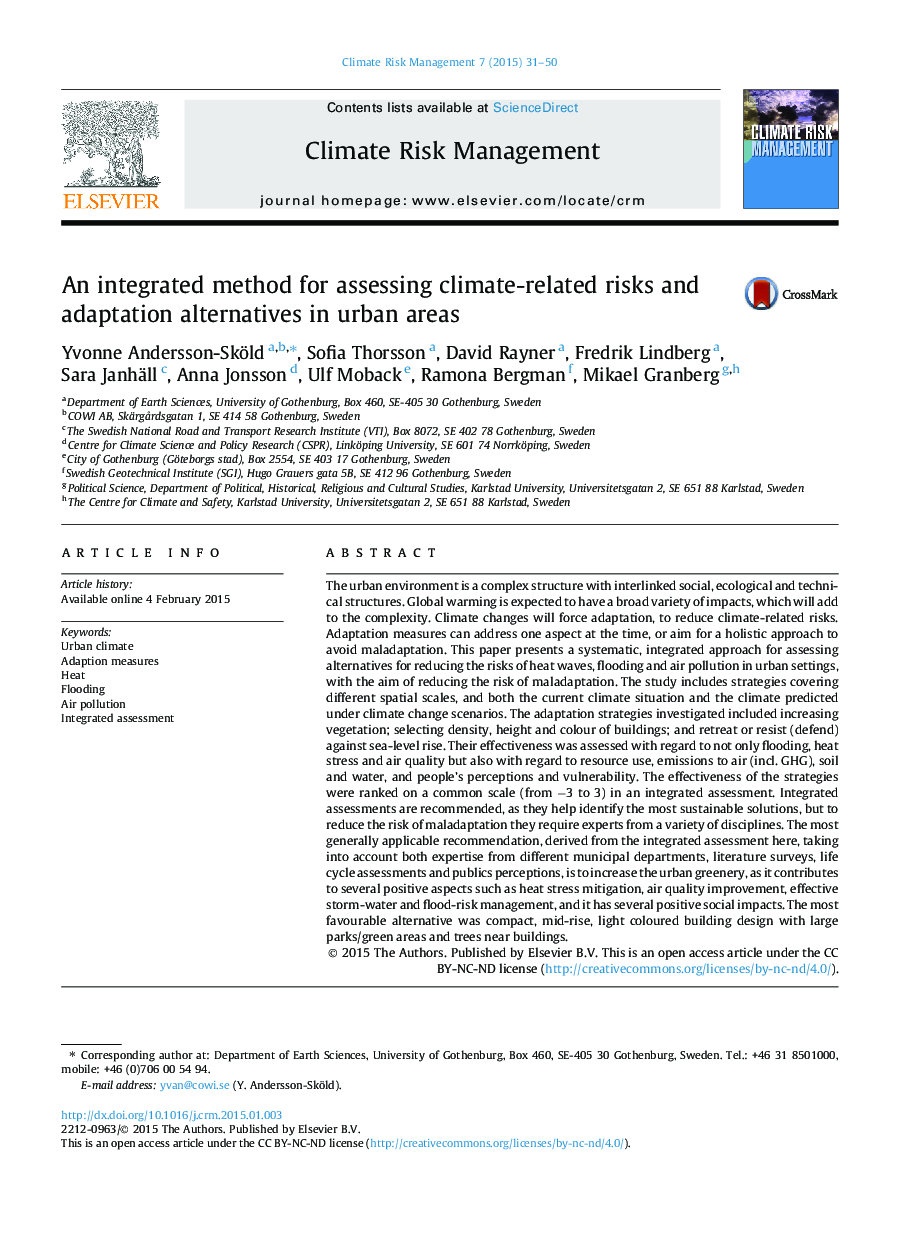| کد مقاله | کد نشریه | سال انتشار | مقاله انگلیسی | نسخه تمام متن |
|---|---|---|---|---|
| 1051273 | 1484885 | 2015 | 20 صفحه PDF | دانلود رایگان |
• To avoid maladaptation in complex urban settings integrated assessments are needed.
• Measures to reduce climate-related risks have been ranked.
• Well-thought-out use of trees and shrubs provides net social benefits.
• Compact, light-coloured building design with large green areas is recommended.
The urban environment is a complex structure with interlinked social, ecological and technical structures. Global warming is expected to have a broad variety of impacts, which will add to the complexity. Climate changes will force adaptation, to reduce climate-related risks. Adaptation measures can address one aspect at the time, or aim for a holistic approach to avoid maladaptation. This paper presents a systematic, integrated approach for assessing alternatives for reducing the risks of heat waves, flooding and air pollution in urban settings, with the aim of reducing the risk of maladaptation. The study includes strategies covering different spatial scales, and both the current climate situation and the climate predicted under climate change scenarios. The adaptation strategies investigated included increasing vegetation; selecting density, height and colour of buildings; and retreat or resist (defend) against sea-level rise. Their effectiveness was assessed with regard to not only flooding, heat stress and air quality but also with regard to resource use, emissions to air (incl. GHG), soil and water, and people’s perceptions and vulnerability. The effectiveness of the strategies were ranked on a common scale (from −3 to 3) in an integrated assessment. Integrated assessments are recommended, as they help identify the most sustainable solutions, but to reduce the risk of maladaptation they require experts from a variety of disciplines. The most generally applicable recommendation, derived from the integrated assessment here, taking into account both expertise from different municipal departments, literature surveys, life cycle assessments and publics perceptions, is to increase the urban greenery, as it contributes to several positive aspects such as heat stress mitigation, air quality improvement, effective storm-water and flood-risk management, and it has several positive social impacts. The most favourable alternative was compact, mid-rise, light coloured building design with large parks/green areas and trees near buildings.
Journal: Climate Risk Management - Volume 7, 2015, Pages 31–50
